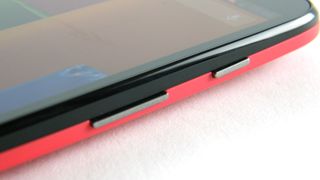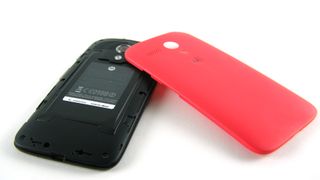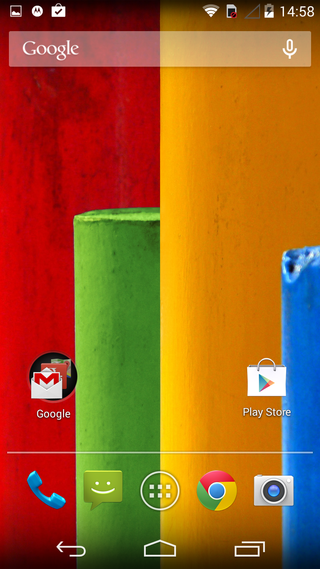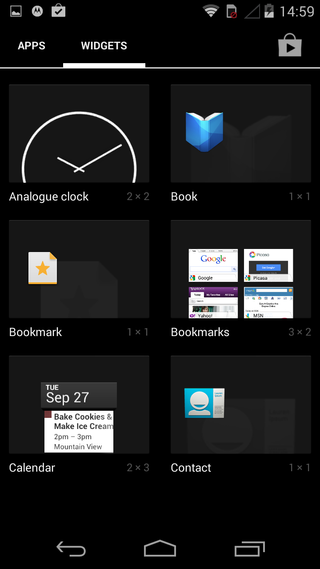TechRadar Verdict
A stunning phone for very little money - poorer camera aside, it's the perfect PAYG phone. You won't get a better budget blower than the Moto G.
Pros
- +
Great value
- +
Decent screen
- +
Slick interface
- +
Android 4.4
Cons
- -
Poor camera
- -
No expandable memory
- -
Low internal storage
- -
No NFC or 4G
Why you can trust TechRadar
Update: Time has passed, and Moto's latest line of budget-friendly phones is full of better options than the original Moto G.
If you're interested in a good all-around smartphone that won't cost a whole lot, check out the Moto G4.
The Moto G4 Plus amps up the performance and adds a fingerprint sensor to the formula for just a little more cash.
Lastly, the Moto G4 Play retains the essentials in the G4 formula, but slashes the price nearly in half. Sure, it isn't as fast or feature-filled as the G4 or G4 Plus, but it's still a heck of a deal.
The best part about the newer devices is that Android Nougat will be available soon. So, the amount of valid reasons to consider an older Moto G, like this phone, are dwindling quickly.
Original review follows below.
Motorola's back, and it's kicking off its global smartphone revival with the keenly priced Moto G handset. A mid-range handset with a low-end price tag and Android KitKat - okay Moto, I'm listening.
First things first then, the Motorola Moto G price. Although the handset is available in two storage sizes - 8GB and 16GB - in other parts of the world, Australia only has the 8GB variety available so far for just AU$249.
So where does this place the Moto G in the market? Well at that price, it has the likes of the Nokia Lumia 520 and LG Optimus L3 2 for company, but dive into the spec list and you'll note the Moto G wipes the floor with them.
In terms of design the Moto G takes most of its cues from the firm's first, post-Google takeover handset, the Moto X.
It's hardly groundbreaking in terms of looks, but the soft, curved edges of the Moto G make it relatively attractive and the swath of plastic feels solid and well built.
Weighing in at 143g the Moto G has a pleasing, well balanced presence in the hand without being overbearing, and while it may measure 11.6mm thick in the middle the tapered edges make it feel thinner than it is.
Couple that with a rubberised rear plate which slightly hugs the side of the handset too, and the Moto G fits comfortably in the palm, providing a decent level of grip.
The Moto G features a water repellent coating which means you'll be able to whip it out in the rain without fear of a short circuit, but it is not waterproof - so no jumping in the pool with it.

You can even take the rear cover off and swap it for a different color, which Motorola is pushing as a big customisable feature of the phone. In reality however it just reminds me of my Nokia 3310.
Sure, changing covers is fun for all of five minutes, but the novelty soon wears off. Not to mention the back cover is also pretty tricky to remove - you need to really dig your nails in at the base of the handset to get it free.
In fact, so much strength needs to be employed to free the cover from the Moto G I feared on more than one occasion that the thin plastic would snap - thankfully it never did.
Motorola did make a point that the younger generation like the ability to "customise" their handsets and this particular feature, along with the rock bottom price, reinforces the Moto G's credentials as a handset which may land in the laps of many teenagers.

The left side of the Moto G is devoid of any features, while the top of the handset only sports a centralised headphone jack. Both the power/lock key and volume rocker switch are located on the right of the G and these are easy to reach and responsive to the press.
On the base is a microUSB port, while under the removable cover is a microSIM port - but no microSD slot. That means if you want to expand the onboard storage you'll have to take to the cloud.

The 2070mAh non-removable battery housed inside the Moto G is claimed to give you all day battery life, and I put that to the test - skip ahead to the battery life and connectivity section to see how it got on.
The Moto G comes with a 4.5-inch, 1280 x 720 display and boasts a 329ppi pixel density. To put that in some perspective that's a bigger, higher resolution and more defined display than the iPhone 5S - not bad for a handset which is a third of the price.

Of course a HD display isn't the only key factor in a smartphone, but Motorola has managed to equip the Moto G with a 1.2GHz quad-core Snapdragon 400 processor and 1GB of RAM.
In terms of specs then the Moto G is actually giving the HTC One Mini, Samsung Galaxy S4 Mini and Nokia Lumia 820 a run for their mid-range, dual-core money - and once again the screen is bigger than these rivals. The Motorola handset even beats the Samsung and Nokia when it comes to resolution.

The camera on the rear of the Moto G is only 5MP and this is trumped by the S4 Mini and Lumia 820 and their 8MP snappers.
All in all the Moto G finds itself in no-mans land, with a complete disconnect between its price and spec list. This, of course, isn't a bad thing and on paper it offers outstanding value for money.
The proof however, is in the pudding, so let's see how the Moto G got on in real life.
Interface
The Motorola Moto G is one of the first handsets to be updated to Google's latest software - Android 4.4.2 KitKat - thanks to the manufacturer now being owned by the search giant.

With a 1.2GHz quad-core processor and 1GB of RAM at its heart, the Moto G is more than well equipped enough to run KitKat which is the smoothest version of Android to date.
Android purists will be pleased to learn that the Moto G is running the stock version of KitKat, with Motorola opting against applying an overlay - claiming instead that it's focused on things which add real benefit to users.
These "benefits" include a faster boot up time and improved audio, data management, web speeds and general navigation.
I found that the Moto G did boot up impressively quickly, but Motorola's claims that it performs various tasks quicker than the Samsung Galaxy S4 still seem a little far fetched to me.
Sure the interface is smooth - impressively so in fact when you consider the price - but I can't say that it noticeably out performs, or even matches the various flagships I've had the pleasure of using.
General operation is fluid and while it may not be as lightening quick as the top end handsets, the quad-core chip is doing a good job under the hood and I had no issues with lag.

You get five homescreens - no more, no less (there's no way to add or remove) - and the familiar Android set up with a selection of widgets available in the tabbed app drawer for you to choose from.
Drag and drop an app onto another on any homescreen and the Moto G will automatically create a folder with both applications inside, allowing you to easily organise and manage your favorite apps.
The pull down notification bar at the top of the Moto G's display offers up a feast of information from recent calls, new emails and text messages to Google Now prompts, app updates and third party notifications.
Glide a finger over certain notifications, such as a new email alert, and it will expand allowing you to see a longer overview of the message.
Slide you finger up from the home key at the base of the screen and you'll launch Google Now, Android's own digital personal assistant and Siri rival.

Google Now offers up relevant information in a series of cards, and by tracking your movement, messages and emails it can tailor these cards to suit your needs.
You can get information such as the weather, meeting reminders and details on the journey home here. It's still relatively hit and miss and there are far fewer features enabled for those outside of the US, but Google is constantly working on Now and it's slowly becoming more relevant.
Tap the multi-tasking key in the bottom navigation bar and you'll be greeted with the familiar stack of thumbnails showing the apps which are currently running.
This is testament to the quad-core processor inside the Moto G, as the handset can comfortably handle multiple apps at the same time and you're able to switch between them very quickly.
Basic applications opened promptly, but I did notice some lag with some of the more demanding games, such as Stick Cricket and Stick Tennis.

When these were tapped the Moto G took a couple of seconds to load up the application. It's not a huge issue and game play is still smooth once you're past the initial load, but it just hints at a potentially small flaw in the low 1.2GHz clock speed of the quad-core chip.
Everything looks bright, crisp and clear on the 4.5-inch display and while the Moto G doesn't match up to the full HD offerings you get on the flagship phones, for a handset with such a low price you'll be more than happy and it puts the competition to shame.
There's a thin bezel down each side of the screen, but it's not the slimmest I've seen and I reckon Motorola is pushing its luck a little calling it an "edge-to-edge display."
Sure it doesn't feel like there's any unnecessary plastic padding around the screen, but it's not a close cut as on other handsets - the LG G2 springs to mind immediately as a handset with a slimmer bezel.
The screen is also very responsive to the touch which makes moving around the Moto G a stress-free experience.
Current page: Introduction, design and interface
Next Page Contacts and calling
John joined TechRadar over a decade ago as Staff Writer for Phones, and over the years has built up a vast knowledge of the tech industry. He's interviewed CEOs from some of the world's biggest tech firms, visited their HQs and has appeared on live TV and radio, including Sky News, BBC News, BBC World News, Al Jazeera, LBC and BBC Radio 4. Originally specializing in phones, tablets and wearables, John is now TechRadar's resident automotive expert, reviewing the latest and greatest EVs and PHEVs on the market. John also looks after the day-to-day running of the site.

Wear OS 5: what we want to see, and all the leaks so far

The obscure little PC that wanted to be a big NAS — super compact Maiyunda M1 doesn't cost that much, offers up to 40TB SSD storage, runs Windows and has 4 Gigabit Ethernet ports

Image site Abload going offline reminds me of how much online content we've permanently lost
